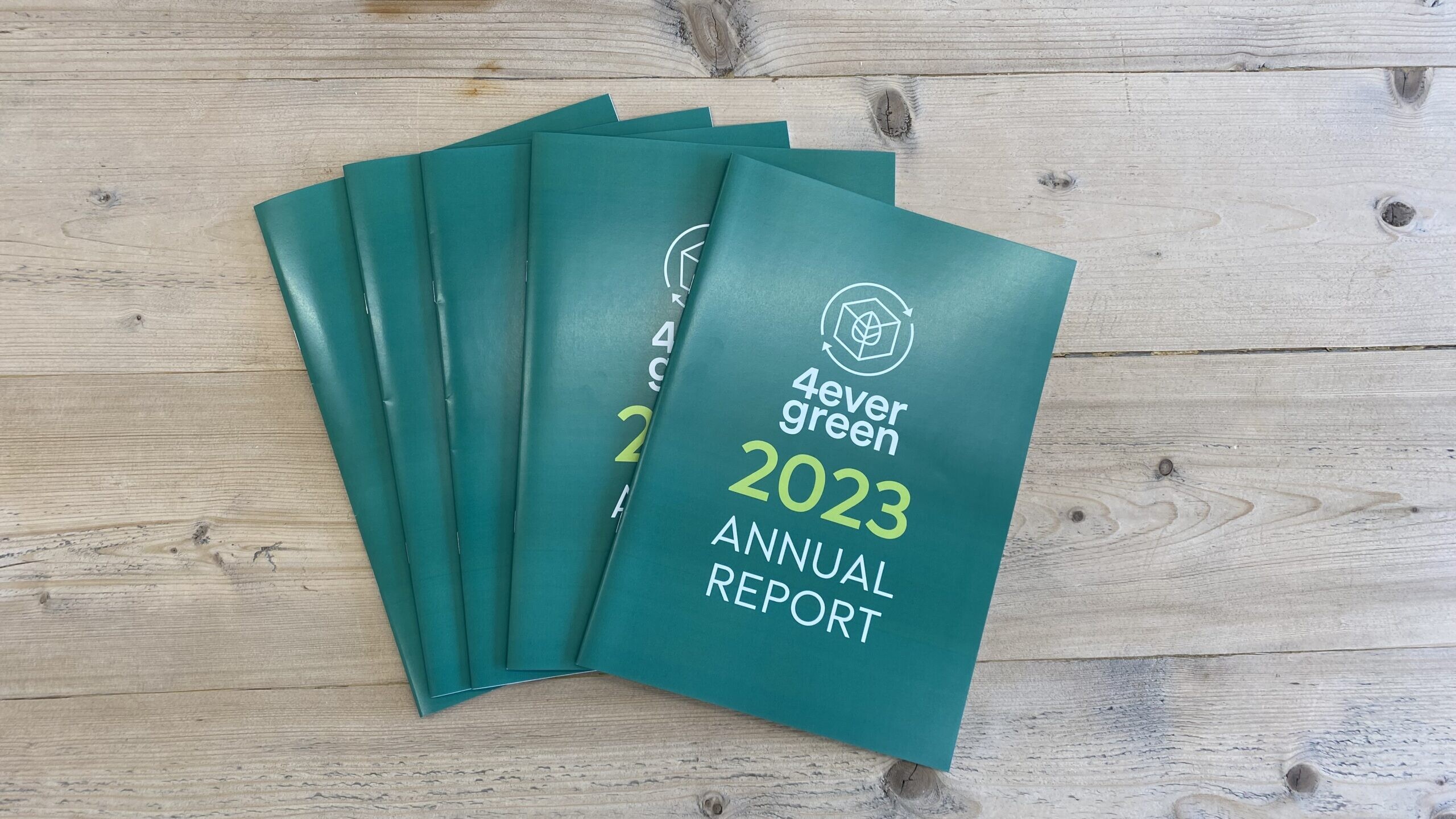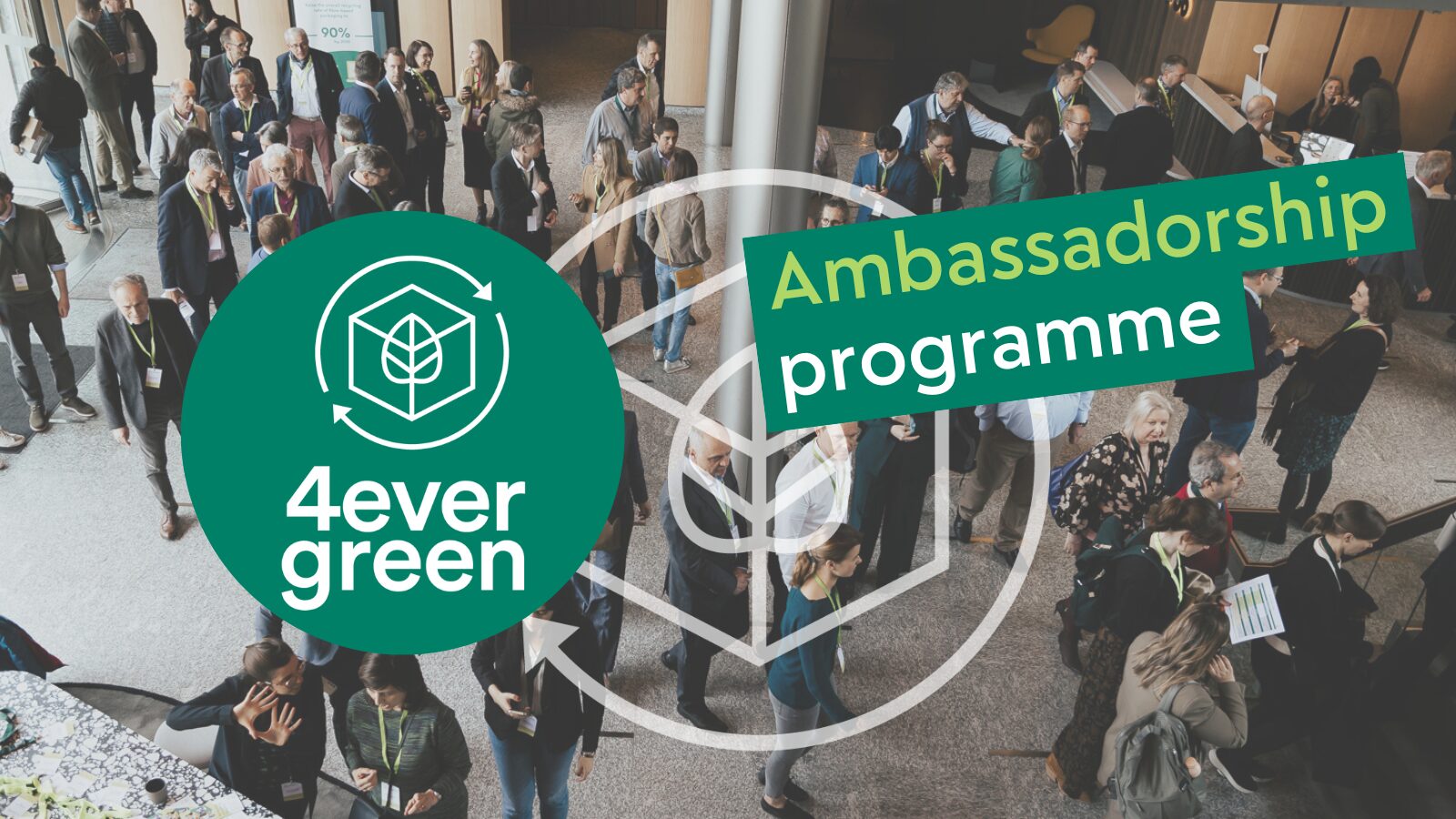Recycling is one of the pillars to reach a more circular and sustainable future. When it comes to packaging, fibre-based packaging has the highest recyclability rate in Europe. However, to achieve sustainable economic growth, we need to develop more efficiency in the recycling procedure and enhance circularity.
On the road to increasing the recyclability rate even further and making the packaging industry even more sustainable and fully circular; we must first, understand the recycling history and process.
Recycling paper: an old story
The paper industry is a pioneer in the recycling process. The origin of the recycling logo —used to identify the recycling process and packages made from recycled and recyclable fibre, comes from a design student in the 1970s. However, the history of paper recycling starts long before.
In the 10th century, the Japanese began recycling paper almost as soon as they learned how to produce it and recycling became part of paper production and consumption. That was the very first recorded use of recycled paper.
Reaching more recent times, the Rittenhouse Mill started recycling linen and cotton rags to produce paper in Philadelphia. But it was only in the 19th century when the English papermaker Matthias Koops invented the first practical processes for obtaining high-quality recycled paper from waste paper or wood pulp —without including expensive linen or cotton rags. Koops was granted a patent for extracting printing ink from written paper and convert it into pulp. A process later adopted by paper mills worldwide.
However, just because almost any fibre-based product can be recycled does not necessarily imply that it is being recycled. There are some products made of paper, which cannot be collected or recycled. The share of such paper products, which consist, for example, of cigarette papers, wallpapers, tissue papers, and archives, is estimated to be about 19% of the total paper consumption. Furthermore, paper that can be recycled must be kept separate from other household waste, as contaminated papers are not acceptable for recycling.
When it comes to recycling, fibre-based packaging stands up. Today, 82.3%of fibre-based packaging in Europe is recycled[1] and 56 million tonnes of paper for recycling were collected[2].
How does the actual fibre-based packaging recycling process work?
Once fibre-based packaging is collected and sorted, it goes through the actual recycling process. That way, the extracted fibres are reprocessed and find their way into new products, which is the added value.
Firstly, one has to pulp the collected paper and packaging. This process is a similar procedure to the one performed to manufacture paper made from fresh-fibres. The paper waste is dissolved in water during this process and slushed into a pulp, while sizable non-fibrous contaminants are discarded. The substance resulting from the fibre-cleaning process is filtered and screened multiple times.
Furthermore, during recycling one has to remove the ink from some papers in a flotation process called de-inking. Air is blown into the solution, and the ink adheres to bubbles of air and rises to the surface from where it is separated. The result is a fibrous material called recycled pulp that needs to be pressed and dried. At this point, the pulp is ready to be made into paper.
However, fibres cannot be recycled forever because they lose their paper-making qualities. A certain quantity of fresh fibres needs to be incorporated in the recycling stream. Without fresh fibres there would not be recycled fibres.
Moreover, there are also two main challenges to consider during the fibre-based packaging recycling process: the functional properties of packaging and the heterogeneous collection process.
On the one hand, it has to be taken into account some functional properties are needed from some kinds of packaging. In some cases, packaging requires to be coated, laminated, or treated in other ways to meet the different barriers or functional requirements for product protection, which can be more challenging for the recycling process.
On the other hand, as mentioned in a previous article, the heterogeneous collection mechanisms across Europe can also provide a challenge. Some countries collect all paper-based packaging in one stream. Other countries differentiate a separate paper and board fraction and collect some paper-based packaging along with the lightweight packaging stream. Provided that appropriate collection and sorting is organised, literally all paper packaging can be recycled.
The recycling process should be considered at an early stage of the packaging design and take into account the intended purpose and end-of-life of the packaging to optimise the recycling process. 4evergreen aims to increase the overall recycling rate of fibre-based packaging as well as optimising the circularity of fibre-based packaging. Our aim is to raise the overall recycling rate of fibre-based packaging to 90% by 2030. That is why we are developing a standardised, publicly available, Recyclability Evaluation Protocol for fibre-based packaging, which will identify the fibre-based materials to be recycled and their appropriate technology.
[1] Building a coherent circular economy: The view from the industry | Article | Packaging Europe
[2] European Paper Recycling Council (2020): Monitoring Report 2020. Available: WEB-PAGES_EPRC-Monitoring-Report-2020_20210716.pdf (cepi.org)
A year of collaboration and growth: discover 4evergreen’s 2023 Annual Report!
We are excited to launch 4evergreen’s 2023 Annual Report, looking back at our growth and achievements from the past year and recognising…
4evergreen launches new Ambassadorship programme
4evergreen is hitting the conference floors! This year, the alliance has launched a new Ambassadorship programme that will take us to major…
4evergreen wins European Paper Recycling Award
Brussels, 20 February 2024: The 4evergreen alliance has won a prestigious award from the European Paper Recycling Council (EPRC) in the…



